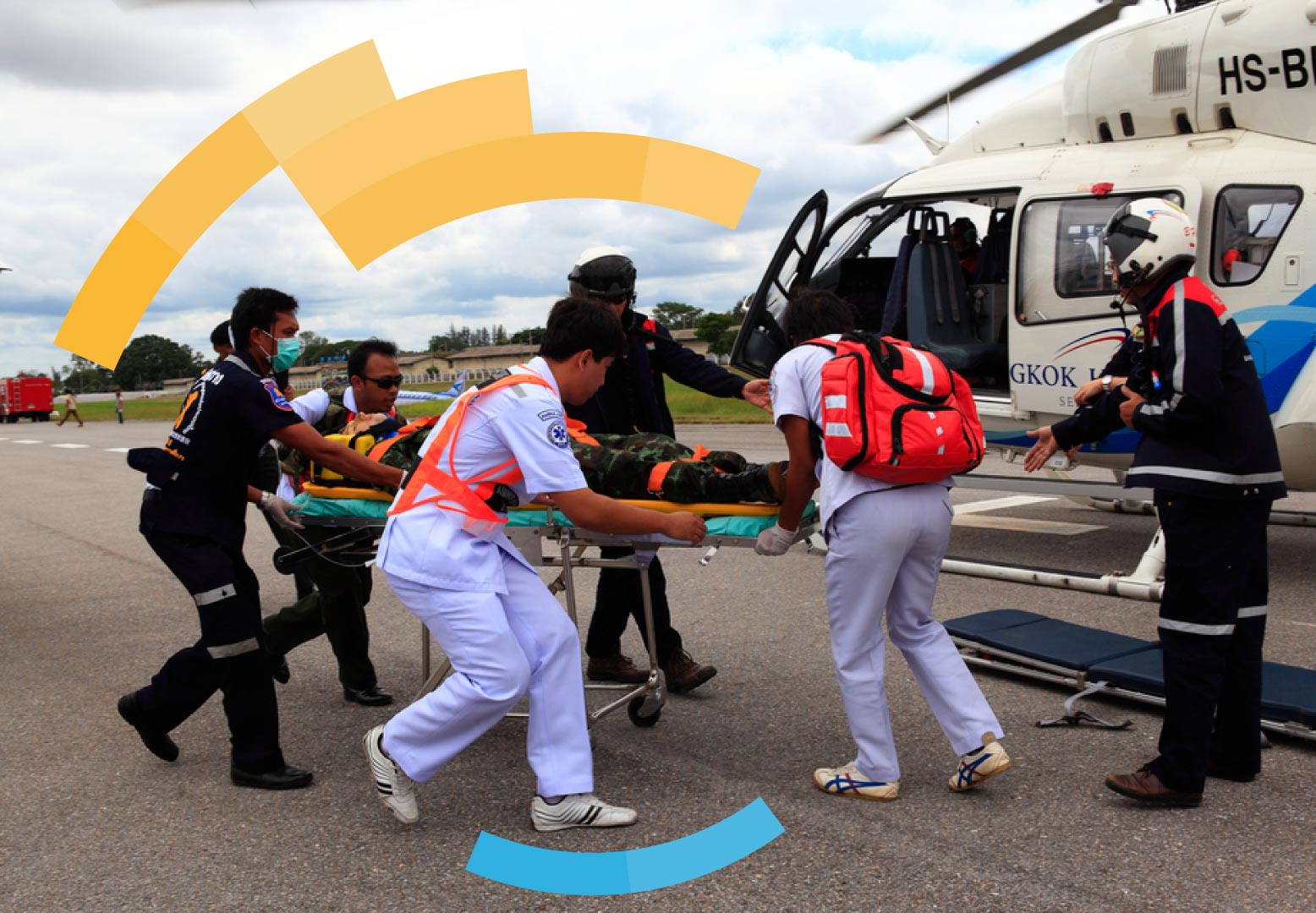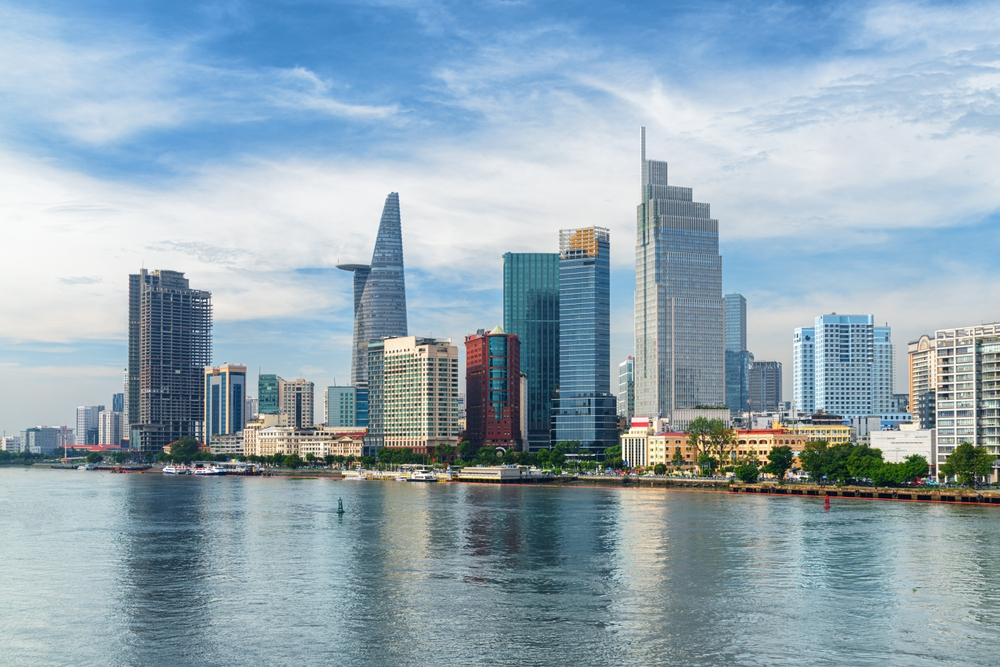Emergency evacuation insurance acts as your lifeline, covering the costs of transporting you to a hospital with the appropriate expertise. However, getting to know the ins and outs of evacuation insurance can be tricky. Check out our blog on Emergency Evacuation Insurance for a comprehensive breakdown.

Is Emergency Evacuation recommended for Thailand?
Emergency evacuation insurance can be a good idea for travel to Thailand, especially for longer trips or are planning to visit islands like Koh Phi Phi or Koh Samet.
Good reasons to get it:
- Top-notch care, anywhere: Thailand has great hospitals in cities, but as mentioned before, remote areas might have limited options. Evacuation insurance gets you to the best hospital, no matter where you are.
- Financial lifesaver: Medical evacuation can be super expensive, especially by air. Insurance covers these costs, so a medical emergency doesn’t wreck your budget.
- Peace of mind boost: Traveling can be stressful. Knowing you’re covered for emergencies, even unlikely ones, lets you relax and enjoy Thailand more.
Things to consider:
- Cost: Evacuation insurance adds to your trip cost. Think about how long your stay is and how much you can afford.
- Double-check existing insurance: Some travel insurance already has some evacuation coverage. See if yours does before buying extra.
Weigh the pros and cons based on your trip and risk tolerance. However one thing to consider while reading all the above is that you need Read the fine print (policy wording): Insurance policies have rules about what’s covered (like pre-existing conditions) and what’s not (like risky activities).
How much Emergency Evacuation coverage do you need for Thailand?
There’s no one-size-fits-all answer to how much evacuation coverage you need for Thailand. Here’s a breakdown to help you decide:
Factors to Consider:
- Trip Length: Longer trips increase the chance of needing medical attention. Consider higher coverage amounts for extended stays.
- Activities: Planning adventurous activities like hiking, diving, or motorbikes? Opt for a plan that covers these situations.
- Health: Pre-existing conditions might require more comprehensive coverage. Discuss your situation with your doctor and insurance provider.
- Budget: Evacuation insurance adds to the overall cost. Choose a coverage amount that balances peace of mind with affordability.
Typical Coverage Amounts:
Evacuation insurance coverage typically ranges from $100,000 to $250,000 USD or some plan even UNLIMITED amounts. Here’s a general guideline:
For example: Evacuation expenses typically range from 90,000 to 300,000 THB+ (3,000 USD-9,000USD). However, depending on factors such as your medical condition’s severity, required medical professionals, and special equipment, costs could exceed a million THB (30,000 USD). So a 100,000 USD coverage would be a good range to look at.
It is difficult to put a number on the coverage one should get as it is a personal choice however knowing that medical emergency bills in Thailand can skyrocket in these situations, It is recommended to go for the most comprehensive coverage you can attain.
Remember: Coverage amounts are just a starting point. Always compare plans and read the fine print to understand what situations are covered and any exclusions.
How to navigate a Emergency Evacuation for Thailand
Seek Medical Attention
- Head to the nearest reputable hospital. In tourist areas, many hospitals have staff with basic English skills. Look for hospitals with international patient departments or signs advertising medical tourism.
- Inform the medical staff you have emergency evacuation insurance.
Contact Your Insurance Provider as soon as possible
- Dig out your evacuation insurance policy details. This should include a 24/7 emergency contact number. Look for a card or information booklet from your travel insurance provider.
- Dial the emergency number immediately. Explain the situation clearly.
From here, Follow Your Provider’s Lead
- Your insurance company will likely coordinate directly with the Thai hospital and arrange for your evacuation, if necessary. They might ask for details like:
- Your location in Thailand (city, province, specific hospital name if possible).
- Your medical condition (a basic description is okay).
Scenario 1: Evacuation within Thailand:
- If your insurance company determines evacuation within Thailand is necessary, they’ll likely:
- Coordinate with the Thai hospital to arrange transport (ambulance, medical flight) to a hospital with the appropriate expertise.
- Facilitate communication between you, the Thai hospitals (current and receiving), and your insurance provider.
- Handle any necessary paperwork and logistics for the transfer.
Scenario 2: Repatriation:
- If treatment in Thailand is not feasible or the treatment the condition requires, then a repatriation back to your home may need to be initiated. This can be your country of residence, however easy policy has its own condition, be sure to read beforehand. the process might involve:
- Organizing medical transport back home, potentially involving a medical escort if needed.
- Coordinating with hospitals in your home country to ensure continuity of care upon arrival.
- Dealing with any necessary travel documentation and clearances for international medical transport.
This process heavily depends on the quality of your travel insurance company and how comprehensive the actual policy is. Be sure to do thorough research on both the company you choose and the insurance policy.
covered.
Emergency Evacuation for Thailand Real Examples:
Question: “While traveling in Thailand, I experienced a fall and needed assistance, including a wheelchair at the airport. I also wanted to upgrade my flight to Business class due to the circumstances. Can my travel policy cover these expenses?”
Answer: This would not be covered, as Medical emergencies Because there are no benefits to cover such expenses in an Emergency Evacuation benefit. There needs to be an urgent medical emergency that needs transportation right away.
Question: “I had a terrifying experience in Thailand! While trekking, I sprained my ankle pretty badly and they’re saying the local medical facilities might not be equipped for the specialized treatment I need. Would my travel insurance cover the cost of transporting me to a hospital in a different city, or even back home, if that’s what the doctor recommends?”
Answer: Most likely this should be covered given that trekking is covered in your travel insurance policy and the insurance can see that your sprained ankle needs more medical attention that is currently being provided in your area. However be sure to check any limitation on how high the altitude of the hike was as many policies will have a capped limit. For example for LUMA Asia Pass, trekking at an altitude limit greater than 5,000 meters above sea level will not be covered.




